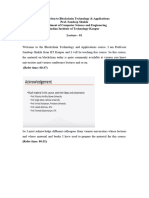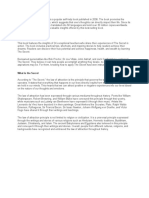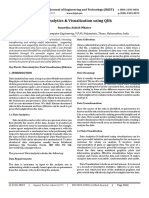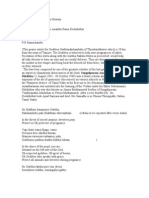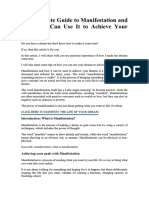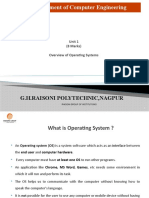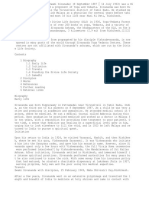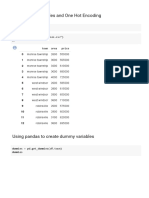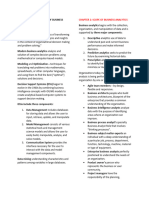ACTS, Pune
Suggested Teaching Guidelines for
Data Analytics
PG-DAI March 2024
Duration: 44 Classroom hours + 46 Lab hours
Objective: To introduce the student to Data Analytics
Prerequisites: Knowledge of programming language of python Programming and basics of
statistics.
Evaluation method: Theory exam– 40% weightage
Lab exam – 40% weightage
Internal exam– 20% weightage
List of Books / Other training material
Text Book:
1. Business Analytics James R Evans 2nd Edition
Reference Book:
1. Business Analytics: Data Analysis &Decision-Making Hardcover – Widescreen
2. Data Science for Business, Foster Provost & Tom Fawcett
3. Data Science and Analytics Paperback by V. K. Jain (Author)
4. Data Analytics for Beginners: A Beginner's Guide to Learn and Master Data Analytics, by
Robert J. Woz
5. Data Analytics: Become A Master In Data Analytics by Richard Dorsey
Note:
• Each session mentioned is for theory and of 2 hours duration. Lab assignments are
indicatives; faculty needs to assign adequate assignments for better practice.
Trainer has to teach the statistical and probability concepts involved here in detail
• Trainer must teach ‘SCIPY’ package in detail.
Session 1 & 2:
Introduction to Business Analytics using some case studies
Data analytics Life Cycle:
Discovery
Data preparation
Model planning
Model building implementation
Quality assurance
Documentation
Management approval
Installation
PG-DAI Page 1 of 4
�ACTS, Pune
Suggested Teaching Guidelines for
Data Analytics
PG-DAI March 2024
Acceptance and operation
Assignment –Lab: Setup workspace in either in Google Colab or Jupyter and go through the
documentation of Pandas, Numpy, Sklearn libraries.
Session3:
Intelligent data analysis o Nature of Data
Analytic Processes and Tools o Analysis vs. Reporting
Modern Data Analytic Tools
Assignment –Lab: Explore the nature of data.
Session 4:
Visualization and Exploring Data
Case studies: Making Right Business Decisions based on
data
Assignment –Lab: Load a sample dataset and explore the data and draw some insights. Also use
Matplotlib and seaborn libraries.
Session 5:
Descriptive Statistical Measures
Summary Statistics - Central Tendency & Dispersion (Mean, Median, Mode, Quartiles,
Percentiles, Range, Interquartile Range, Standard Deviation,
Variance, and Coefficient of Variation)
Assignment –Lab: Load any dataset and find out the mean, median mode and other central
tendencies of the dataset.
Session 6:
Sample& population, Uni-variate and bi-variate sampling, re-sampling
Sample Spaces and Events
Joint, Conditional and Marginal Probability
Bayes’ Theorem
Assignment –Lab: Load any dataset and apply Naive Bayes function and predict the output.
Session 7:
Random Variable
Probability Distribution and Data
Continuous and discrete distribution – (Normal, Binomial, and Poisson distribution)
Central Limit Theorem
PG-DAI Page 2 of 4
�ACTS, Pune
Suggested Teaching Guidelines for
Data Analytics
PG-DAI March 2024
Assignment –Lab: Generate random numbers and check if they are in normal distribution using
scipy libraries.
Session 8:
Sampling and Estimation
Statistical Interfaces
Assignment –Lab: Load any dataset and explore sampling techniques
Session 9:
Concepts of Correlation
Covariance
Pearson Correlation
Outliers
Assignment –Lab: Load any dataset and find out the covariance between two fields and also find
the correlation and determine how two fields are correlated. Also handle the outliers in the data.
Session 10 & 11:
Hypothesis Testing
Z-Test
Chi-Square
test
Skewness
Session 12:
Predictive modelling and analysis
Application
Types
Benefits and challenges
The Future of predictive modelling
The Limitations of Predictive modelling
Predictive modelling Tools
Session 13, 14 & 15:
Predictive Modelling (From Correlation to Supervised Segmentation):
Identifying Informative Attributes
Segmenting Data by Progressive Attributive
Models Induction and Prediction
Supervised Segmentation
Visualizing Segmentations
PG-DAI Page 3 of 4
�ACTS, Pune
Suggested Teaching Guidelines for
Data Analytics
PG-DAI March 2024
Trees as Set of Rules
Probability Estimation
Prescriptive Modelling
Difference between predictive and prescriptive modelling
How prescriptive analytics works?
Examples and use cases
Session 16:
Regression Analysis
Forecasting Techniques
Session 17:
Simulation and Risk Analysis
Optimization- Linear, Nonlinear
Session 18:
Overfitting and Its Avoidance:
Generalization
Holdout Evaluation Vs. Cross Validation
Session 19:
Decision Analytics
Evaluating Classifiers
Analytical Framework
Evaluation
Baseline,
Performance and Implications for Investments in Data
Session 20:
Evidence and Probabilities
Explicit Evidence Combination with Bayes Rule
Probabilistic Reasoning
Session 21:
Factor Analysis
Directional Data Analytics
Functional Data Analysis
Session 22:
Introduction to KNIME
Assignment –Lab: Load any dataset and explore KNIME tool.
PG-DAI Page 4 of 4


